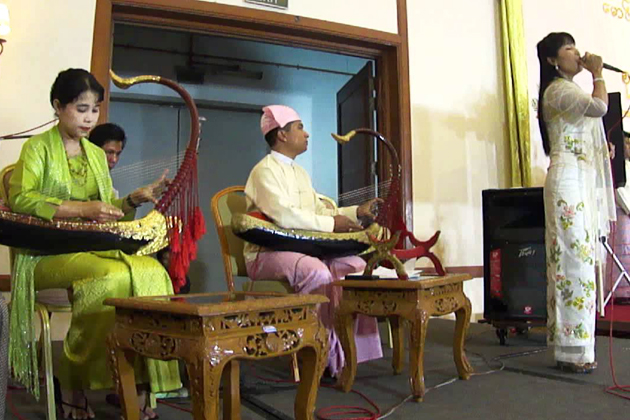There are loads of things encompassing the features of traditional music of Myanmar that make it stand out of the crowd and one of the most obvious unique characteristics that music lovers can identify is that Myanmar’s traditional music is closely attached with the extensive use of traditional musical instruments. For those who are keen on exploring the diversity of Burmese traditional music, traditional Burmese ensemble and chamber music is the one that definitely interests you most.

Among Burmese ensemble and chamber music, there is a little distinction between them. This difference lies in the loudness of the instruments that have been used. As regards the traditional Burmese ensemble music, it is regarded as the ‘loud’ music as it refers to such instruments as gong circle, drum circle, and the oboe. This kind of music is mainly based on rhythm instead of melodies, which make it a bit similar to Thai ancient music.
One of the most popular ensembles is ‘saing waing’ which embraces 6 to 10 players. With this type of ensemble, there exists a drum and a gong circle, accompanied by a oboe, clappers, cymbals and the main drum. The main drum will serve the function as the core instrument and the person playing this main drum will also be the troop leader. Unlike ensembles in the past, the present ones are mostly integrated with the western instruments, except for the ‘nat pwe’ which is still adhered to the rules of traditional musical instruments. While ‘nat pwe’ strictly follows traditional rules, other ensembles emphasize on the use of myriad drums. Those ensembles were often performed during festivals. In those occasions, ‘se gyi’ drum dancers cooperate with the audience.

Compared with ensemble music, chamber music uses a great number of instruments. Despite no strict rule being adopted, most of the instruments were played the women at the contemporary time. Interestingly, this kind of music is played in the form of a duet which involves a harp player and a vocalist taking control of the music with the support of bamboo clappers, coupled with cymbals.
